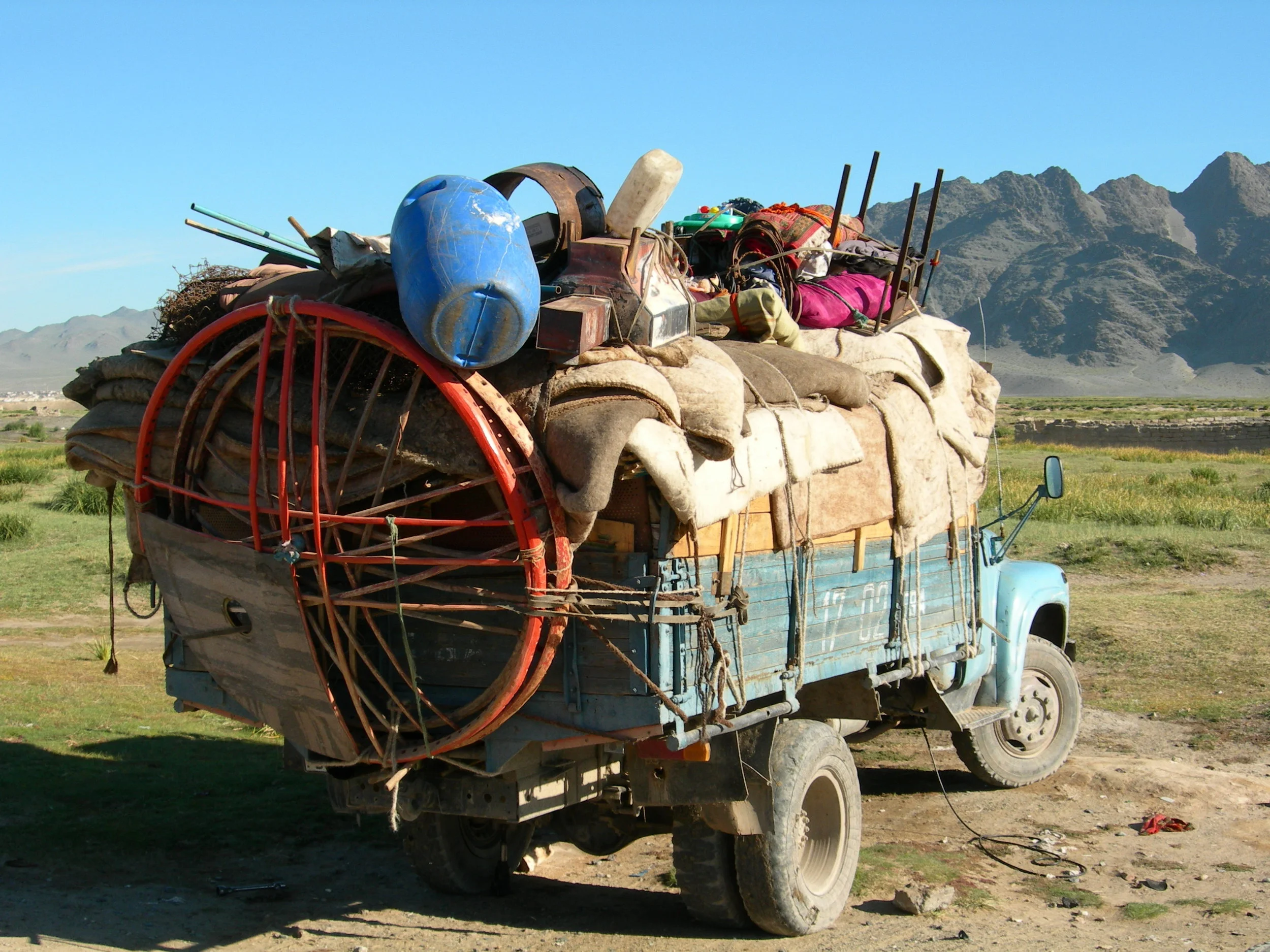THE PRACTICE OF MOVEMENT:
NOMADIC ARCHITECTURE IN MONGOLIA, INDIA, MAURITANIA AND IRELAND
Project Proposal submitted to Watson Fellowship, Spring 2005
We live in an age characterized by movement, by the increasingly present voice of globalization urging a shift towards permeable boundaries, trans-nationalism and the free movement of capital. So why then are nomadic cultures, communities that also valorize and survive on mobility, consistently some of the most marginalized communities in the world? What makes the struggle of nomadic people to retain their culture of movement discordant with – and unintelligible to – the modern development agenda? Why have nomadic groups from Jaisalmer to Leeds abandoned the homes and towns that government agencies have built for them and insisted that, while they require basic facilities, settled life is fundamentally inconsistent with their culture? Why are modern nomadic groups beginning to re-define themselves in ways that privilege their shared experience of movement and community organization across ethnic, caste and national boundaries?
My project approaches these questions by focusing on nomadic architecture and housing issues. The guiding principles for the study stem from the field of cultural landscape studies. I am primarily concerned with how people use everyday space – in this case housing – to articulate social relations, identity and cultural meaning. The project seeks to investigate the relationship between a social group and its spaces, between political economy and landscape organization, between collective voices and agency.
Mobile structures and cultures are particularly important sites of study as they mark an environment in which a community maintains a direct and continual engagement with physical and social construction. Whereas all communities are engaged on some level with the process of deriving meaning and identity from their built environments, through the modernization of construction and architecture, settled people (particularly in the global North) have much less direct engagement with the construction of their built environment. Due to both the technical necessity of their lifestyle and the marginalization of their communities, nomadic groups are perpetually engaged in a process of constructing and reconstructing their homes and identities.
By studying nomadic domestic architecture, I hope to approach the following questions: What can we learn about cultures and communities by the way in which they fashion their homes? How are physical structure, location, materials, and social construction linked to cultural identity? How does the construction and vision of a home respond/react to social, political, economic and geographic necessity? How might nomadic communities (and spaces) be understood through movement? What happens when these communities are forced to settle?
The act of constructing a home is not only a process of social mirroring, maintenance and construction; it makes these structures and factors visible. Through building, ideology is transferred into actions that are public and can be studied. Notions of physical closeness, privacy and ownership can be seen in the layout of villages and the orientation of tents or pastures. The type of building materials used and their preparation, distribution of labor associated with construction, methods of storing food, the particulars of sleeping arrangements, the land occupied and its characteristics speak volumes about the people who dwell there.
Fieldwork was conducted in Mongolia, India, Mauritania, and Ireland over the course of sixteen months. The project began in Mongolia, where I stayed from August until late November, beginning in Ulaanbaatar, the capital city, but quickly moving to far western provinces of the country living with pastoral nomads, some of whom have maintained their herds and their nomadic communities and others of whom have recently become settled.
I next moved to India where I spent my first month in the great pilgrimage city of Benares (Varanassi) refreshing my Hindi before heading west into Rajasthan. I set up base in Jaisalmer, an ancient trading city in the Thar Desert that has been home to castes of traveling nomads for thousands of years, including the Gadolia Lohars (blacksmiths), Banjaras (traders), Kalbelias (snake charmers), Bopas (storytellers), and Raikas (herders). From my center in Jaisalmer, I moved across the Thar Desert from settlements to herder camps to camel fairs from December until April.
In late April, I began my time in Western Africa by traveling through Morocco, exploring the souks of Fez and Marakesh as well as the desert communities caring for herds of goats and European tourists. In Mauritania and western Mali, I stayed with Hassaniyan and Tuareg communities in Nouakchott, Atâr, Mopti and Timbuctou. The Hassaniya are pastoral nomads, while the Tuareg have historically survived through the cross-Sahara salt trade. Both groups live in beautiful sheep wool tents, which women in the community construct, maintain and transport on camel litters.
At some point in the late spring, perhaps May, I left the Sahara and traveled to Ireland. For the next three months, I moved along the couth coast, stayed in Dublin for several weeks before seting camp in Cork in order to work with The Pavee Point Travellers Center and Exchange House Travellers’ Services, two grassroots organizations working on housing and human rights advocacy for Traveller and Romany communities in Ireland, England and Scotland.
The bulk of material for the project was gathered through fieldwork, relying heavily on participant observation with communities while on migration or settled in camp. Instead of relying on formal interviews, participatory field methods were employed in a methodology that actively seeks to privilege the experience and knowledge of people over texts while directing attention to details of site and context.
Stephanie Carlisle
August, 2006
